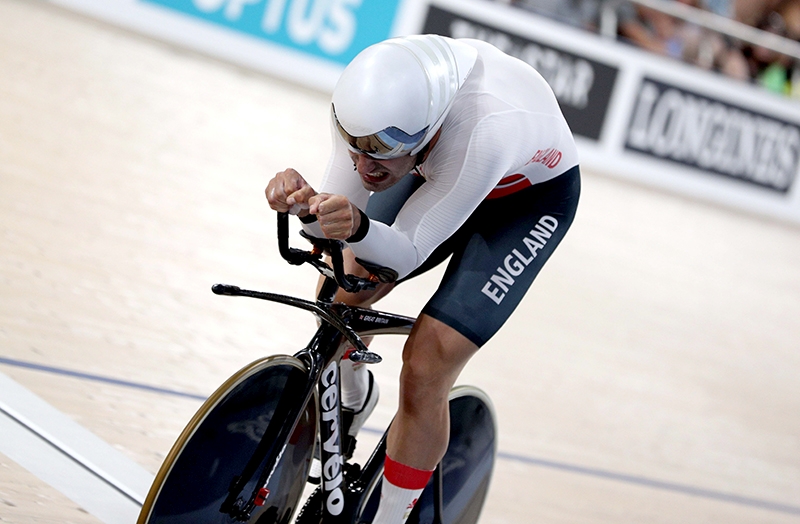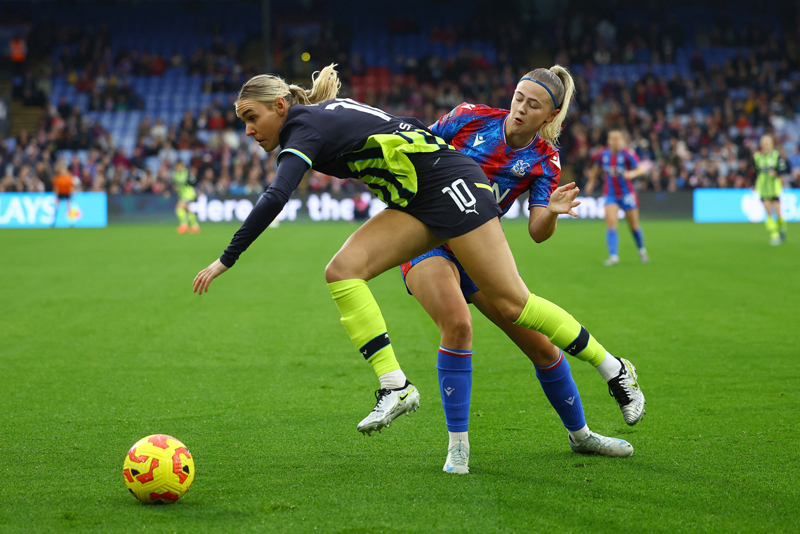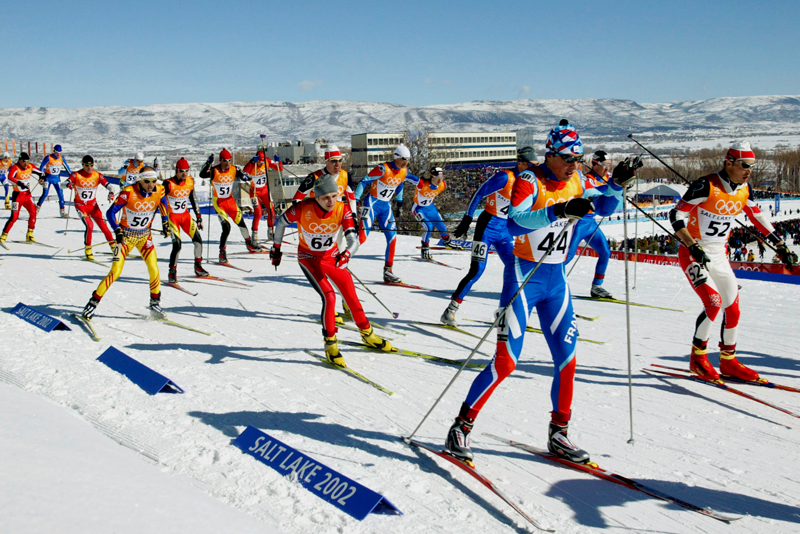
Check out pictures and footage of the great riders of yesteryear, hunched over their bikes, head down with arms on the lower ‘drops’ of the handlebars. These riders knew they could alter speed with body position long before ‘wind tunnel drag scores’ and ‘outdoor power-to-speed data’ showed us that the rider on the bike contributes more than two-thirds of the drag at competition speeds.
Most pro riders take years to find their optimum riding position, often by working around body function or shape limitations, such as lower spine inflexibility or overly muscular shoulders, but with their end goal clearly understood. Ironically, the drop-handlebar record holders and winners in the pro peloton (before the 1980s’ aero revolution) rode lower than many current amateur time triallists and triathletes on so-called aerobars!
The yesteryear phrase of ‘being on the rivet’, meant, quite literally, moving onto the front of the saddle (where saddles once had a rivet holding the leather to the seat cradle), tucking down and going like billy-o. So, for many riders new to cycle competition or yet to realise their full potential, body position is the real key to dropping effort and increasing speed – not some aero component, which by itself will have a negligible effect!
We know that equipment choice, such as frame, helmet and clothing, affect the aerodynamic drag of the bike and rider ‘unit’ (see PP issue 267), but it does this by significantly altering the rider’s shape and efficiency. Equipment has its own drag but it also allows a rider to find his or her own aero ‘sweet spot’. So for example, aerobars make riders faster not because the drag of the bar is lower than a conventional handlebar but, rather, they enable the rider to achieve a lower, narrower and more aerodynamic position.
Your personal needs
The bottom line is that you need to consider your personal situation. It’s difficult to list an exact hierarchy of needs but here are some variables to consider, and examples which, together with the basics already mentioned, can help you find your optimum aerodynamic position. It’s also a good idea to try to get an accurate assessment of your own body characteristics from a cycling coach, professional bike fitter or an experienced rider who is capable of offering objective advice.Torso angle – In a time trial position, taller riders shouldn’t place their forearms just above the front wheel like shorter riders (though a few unique people do manage it). The drop from the top of the saddle to the handlebar or aerobar cups needs to ensure a low torso and, most importantly, the ability to maintain this position. Too big
a saddle-to-bar drop and the rider will feel uncomfortable and be forced to slide the hands backwards along the aerobar extensions.
However, average to short riders who are moderately lean can often achieve lower drag from stems with significant vertical drop. Data from wind-tunnel trials show that dropping a rider’s shoulder and head height, nearer to a horizontal torso angle, results in less power being needed to maintain the same speed (anything from three to 15 watts, equating to around two seconds per kilometer at race speed). However, those already close to the horizontal torso position may actually experience drag increases of around seven watts or more when trying to ride even lower. This indicates that for every rider, there is a sweet spot and ever- lower is not always faster.
Torso-leg proportions – Riders with longer legs often gain comfort and a more sustainable riding position by having a shorter than conventional reach from the saddle to the ends of aerobars or brake levers on drop bars. Riders with long bodies need to ensure seat height is not excessive because, after all, they aren’t as long in their legs as most other riders of the same height. Again the aim is to hold an aero position on the drops or aerobar that is comfortable, sustainable and yielding the most speed ‘bang’ for the rider’s pedalling ‘buck’.
Arm position – This is a notoriously difficult area in which to give an exact prescription. Some riders on aerobars maintain narrow horizontal forearms while others ride with forearms pointing upwards by anything up to 45 degrees, placing their hands in front of their face. It turns out that this ‘front of the bike and rider unit area’ alters the interactions of airflow over many subsequent body parts as you move rearwards. This is where wind tunnel time pays for itself many times over. The ability to know from tunnel data that a particular arm tweak helps rider efficiency, though it is sometimes counter-intuitive, can still reap some extra speed (see figure 1).
In the 1990s, Chris Boardman’s ‘low forearms’ position during his record-breaking time trial rides set a precedent that many riders seeking better times subsequently followed. However, the emergence of a new ‘Landis-Leipheimer 45-degree forearm position’ in the new millennium seemed to break those widely-accepted rules. The reality is that each rider has an optimum riding position and you’ll never truly know that without super-accurate drag data. Get saving for wind tunnel time!
Weight – Few overweight riders, with an expanded waistline, will be able to actually attain personal bests. Although desirable ranges of body fat are much higher for the average sedentary person than those for elite athletes, there is an ‘amateur middle-ground’, where body fat levels are lower than your sedentary peers, but not at super-low values attained by the pros, whose body level levels may dip below 5%. The bottom line is that if it jiggles or it stops you getting low on your bars, there is still some weight to lose. Be honest with yourself and you may unearth a performance increase that exceeds anything possible with new equipment (see PP249 for data on time triallist Gary Holmes).
Flexibility – We’re not all born to be dancers or gymnasts. Also, unfortunate life events and the rigours of training and racing may impair our flexibility. Yet, working on this often-neglected element of performance can be very fruitful. Excessive stretching is unnecessary but routine body maintenance with the help of a professional (eg a masseur), and perhaps supplementary classes such as Pilates or yoga, may highlight areas of significant tightness and imbalance to focus on.
Technique – Aside from buying speed through aero equipment, you can execute techniques in training and racing that positively affect your gains and performances. For example, practising drafting in group sessions can improve your ability to gain ‘free’ speed by riding close to other riders. The drop in drag can be achieved by letting others do the work, saving you the vital energy needed to complete the climbs, where the pull of gravity must be overcome using your own effort alone. Road racers are the kings of saving energy by ‘sitting-in’, so they can be great mentors for the keen sportive rider wanting to learn the tricks of the increased aerodynamic efficiency through drafting.
Alternatively, effective pacing for the time triallist, triathlete or sportive rider going it alone (eg on climbs or solo into the wind) is best achieved by attaining a power output or heart-rate goal properly matched to the desired effort. Being aero early on but running out of fuel due to poor pacing in the last quarter of an event is never going to be a fun or rewarding way to complete competitions. An experienced rider on a lower-budget bike really can beat the headstrong rider who has the bike but is unable to execute a smart race-day ride. Add to this the possible ramifications of feeding effectively and you can see that pacing and feeding must also be optimised to maximise the aerodynamic benefits of a good position on an aerodynamically optimised bike.
Cycling body aerodynamic fundamentals
There are three fundamentals of improving your own aerodynamic efficiency, which can help to identify what you may need to consider in your quest for optimised aerodynamics:- You mustn’t ignore your body’s individualities; you are unique and so should be your riding position. To know yourself is to know what does and doesn’t suit you. Unless you exactly match a pro-rider’s physiology (unlikely), you shouldn’t try to mimic their exact riding position;
- You need to be able to achieve the ideal position(s) for the full length of your events, not just the first half or when someone is watching you;
- You need to be able to adapt to significant life events (eg car crash, overuse injury, etc), over time, and to your goals as they evolve; keeping the same riding position that you used 20 years ago is generally not an option!
If you need to sit up frequently to ‘ease out’ your back in a sportive, or you get repeated cramps during training, you may be better off attending to these issues (for example by using massage, stretching, etc) than by dabbling with a new bit of aero kit or trying to ‘work through the cramp’;
Getting cramping in the stomach area during a long event because you are trying to ride in the same position you did 10 years earlier, despite using a tried-and-tested feeding regime, indicates that this riding position may no longer be suitable for you.
Tried-and-tested products for improving aerodynamics
For you to get the most from yourself and your bike, here are some tried and tested investments and methods that can reap good paybacks:The sportive rider
- Accurate bathroom scales, possibly with a body fat percentage feature, which can help you to monitor and reduce body fat and so reduce aero and gravitational drag caused by your body;
- A comfortable position that allows climbing on the hoods or tops of the bars, plus a good descending ‘fighting the wind’ tuck;
- Small to medium depth V-shaped aero wheels, which will save a few watts reducing overall energy use and increasing speed;
- Clothing that is comfortable but hugs the body (not loose or baggy), especially so for rain capes and gilets.
- An indoor trainer to hone your riding position and practise workouts in optimum position at race-power outputs;
- Hydration/feeding equipment options (eg front-mounted aero bottle);
- A tight skinsuit and snug-fitting aero helmet to minimise body and head drag;
- Regular bodywork, such as massage, to ensure any postural problems arising from long periods spent in a tucked position can be ironed out and problems nipped in the bud.
You have similar needs to the time triallist above, except:
- Any variations in effort or positions tested on the bike may impact on the subsequent running leg;
- Your choices of equipment and riding positions tend to be more variable, as courses tend to be much more hilly than a standard time trial, being more like ‘sporting’ courses.
The quest never ends
There’s never a time to assume you have done everything you can to be ‘aero-efficient’. The mighty Lance Armstrong has been seeking changes to his riding position after a three-year lay-off from top-level time trialling. Things had changed, rules had changed and knowledge had changed. At the time of going to press, his new ’09 position has been wind-tunnel tested for several hours, behind closed doors. Seeking extra speed means his time trial (TT) set-up is likely to be longer from backside to fingertips, narrower from elbow to elbow and complemented by equipment upgrades such as a possible ventless aero helmet (see figure 2 for data on aero helmets and head position).It’s important to remember you need to train to be fitter and to be able to ride in the optimal position for comfort, speed and efficiency. From sportives to time trials to triathlons to ultra-endurance rides, it should be part of your preparation to optimise your body position, not just the equipment that lies beneath it. This may mean more time on your race bike indoors over winter or at specific intervals, to check that a position change still lets you give full effort.
Being aero is about training to be able to ride in an aerodynamic position, and learning from experiences like equipment testing and wind tunnel sessions. As you go for new goals, you must be mindful that many of your methods and or equipment will probably have to adapt. To finally show that the tunnel is the only true place to separate truths from gimmicks, we need to look back in time: Chris Boardman once rode with forearms upwards, hands in front of his face. We all scoffed at the ski-tuck once the flat forearm position took hold. But, fast-forward five years and armed with tunnel data knowledge, riders such as Michael Hutchinson and Levi Leipheimer have now adopted the ski position because it works better for them – as proven by the wind tunnel!
Joe Beer









